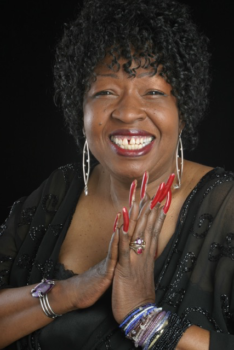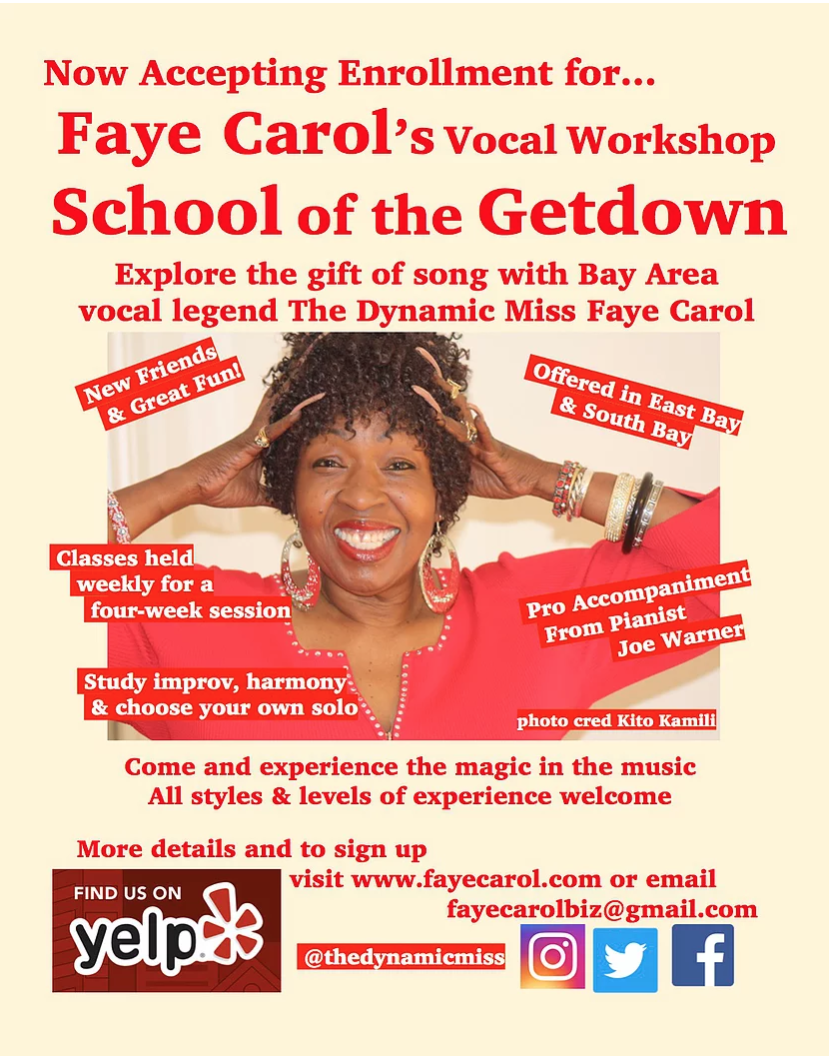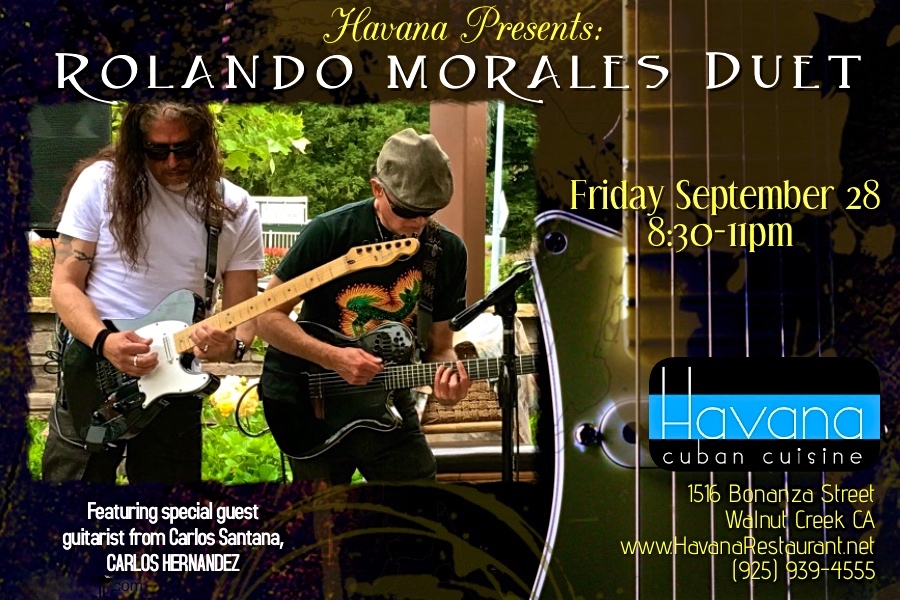
Saturday Oct 6, Havana Cuban Cuisine, 1516 Bonanza St., Walnut Creek, approx 8:30-11pm. Rolando returns for this special series of duet engagements at this fine Cuban restaurant and live music venue. Tonight Rolando welcomes the delightful saxophonist Sonya Jason, who has shared the stage with Sheila E. and the Brothers Johnson; and on guitar, voice and his pedal board of magic, Rolando Morales. This is a rare opportunity to catch this inspiring duet laying down their unique blend of Latin-jazz fusion. Don’t miss it! www.havanarestaurant.net, (925) 939-4555.
Thursday Oct 11, Casa Bella, 11984 Main Street, Sunol, 5-8pm. Rolando returns to this unique venue that blends elegance in a rustic setting in the quaint historical section of Sunol. Catch Rolando on solo guitar, voice and his pedal board of magic on the brick patio in the pergola surrounded by beautiful landscaping. The perfect setting for Taco and Tequila Night! Kid and dog friendly, so gather your friends and family and bring on the night together! Free! sunolscasabella.com, (925) 939-4555.

Friday Oct 12, Havana Cuban Cuisine, 1516 Bonanza St., Walnut Creek, approx 8:30-11pm. Rolando returns for this special series of duet engagements at this fine Cuban restaurant and live music venue. Great Cuban cuisine, ceiling fans swirling lazily and Rolando’s vast Latin repertoire and beyond. Tonight Rolando welcomes the charismatic Latin percussionist-vocalist who played with George Benson and Prince, Estaire Godinez; and on guitar, voice and his pedal board of magic, Rolando Morales. Together, they’ll be blending all kinds of musical treats. Don’t miss it! www.havanarestaurant.net, (925) 939-4555.
Saturday Oct 13, Maria, Maria Cantina, 1470 North Broadway, Walnut Creek, approx 6-9pm. Rolando makes a rare Saturday night appearance at Carlos Santana’s Walnut Creek restaurant. Enjoy Rolando on solo guitar and voice with his huge repertoire and big sound out on the front patio. If it’s too cold, he’ll play indoors in the restaurant. See if he is joined by a special musical guest. www.mariamariarestaurants.com, (925) 946-1010.
Thursday Oct 18, Casa Bella, 11984 Main Street, Sunol, 5-8pm. Rolando returns to this unique venue that blends elegance in a rustic setting in the quaint historical section of Sunol. Catch Rolando on solo guitar, voice and his pedal board of magic on the brick patio in the pergola, or in the Event Center if it’s too cold. The perfect setting for Taco and Tequila Night! Kid and dog friendly, so gather your friends and family and bring on the night together! Free! sunolscasabella.com, (925) 939-4555.
Thursday Oct 25, Casa Bella, 11984 Main Street, Sunol, 5-8pm. Rolando returns to this unique venue that blends elegance in a rustic setting in the quaint historical section of Sunol. Catch Rolando on solo guitar, voice and his pedal board of magic either on the brick patio in the pergola, or in the Event Center if it’s too cold. Taco and Tequila Night! Kid and dog friendly, so gather your friends and family and bring on the night together! Free! sunolscasabella.com, (925) 939-4555.
Friday Oct 26, Maria, Maria Cantina, 1470 North Broadway, Walnut Creek, approx 6-9pm. Rolando returns to Carlos Santana’s Walnut Creek restaurant for a rare Friday night performance. Enjoy Rolando on solo guitar and voice with his huge repertoire and big sound either out on the front patio or in the restaurant, depending on the weather. www.mariamariarestaurants.com, (925) 946-1010.
Saturday Oct 27, Havana Cuban Cuisine, 1516 Bonanza St., Walnut Creek, approx 8:30-11pm. Rolando returns to this fine Cuban restaurant and live music venue. Tonight, for only the 2nd time at this venue will be the remarkable Grammy-winning Latin percussionist-vocalist from Venezuela, Omar Ledezma, from the Pacific Mambo Orchestra; and on guitar, voice and his pedal board of magic, Rolando Morales. Together they create fire. Don’t miss it! www.havanarestaurant.net, (925) 939-4555.
CD SALES
If you would like to order a CD, read on. If you’d like to order our CD “Rolando Y Qué?!”, you can pick it up at my website, the gigs or by mail. They’re $15.00 at the gigs, or $17.00 by mail to cover postage and handling. TO ORDER THE NEWEST CD “ROLANDO, Y QUÉ?!” by mail: Send a check or money order payable to Rolando Morales for $17.00 for the CD and postage to Rolando Morales, 9028 Burr Street, Oakland, CA 94605. and I’ll send it to you. Let me know if you’d like .it signed.
TO ORDER THE ORIGINAL “PASSPORT: 10th ANNIVERSARY EDITION” CD by mail, send $17.00 to the same address as above. Be sure to include your return address.
BOTH CDs ARE AVAILABLE FOR PURCHASE AT WWW.ROLANDOMORALES.COM
All other shows are private. Why not hire Rolando for your own private event? He’s available for corporate shows, weddings, parties, concerts and festivals. The Rolando Morales group is available as sextet, quintet, quartet, trio and duo depending on your entertainment needs and budget.













